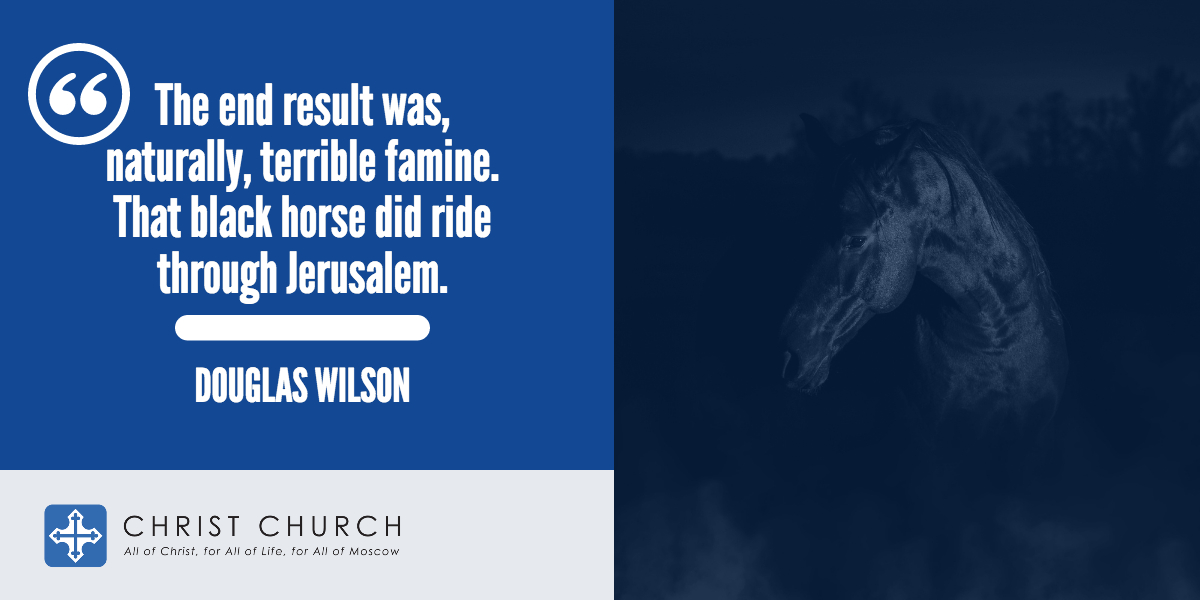“At thy right hand there are pleasures for evermore” (Ps. 16: 11)
“And when he had opened the fourth seal, I heard the voice of the fourth beast say, Come and see. And I looked, and behold a pale horse: and his name that sat on him was Death, and Hell followed with him. And power was given unto them over the fourth part of the earth, to kill with sword, and with hunger, and with death, and with the beasts of the earth” (Rev. 6:7–8).
The fourth seal is now opened, and as before, the next living beast cries out to come and see. John looked, and he saw a sickly green horse ride out. The word translated pale here is chloros, which means we shouldn’t lose the greenish tint to this pestilence. Death rides the horse, and Hades follows after. It is important for us to distinguish Hades from Hell. The former is the place of the dead, a place of shades. In the Old Testament it is called Sheol. Hell is the final judgment, the lake of fire, into which Death and Hades will eventually be cast. Hades and Hell are different because Hades is finally thrown into Hell (Rev. 20:14).
So Death rides the horse, slaying a fourth part of those before him, and Hades follows after, like a wagon meant to gather up the bodies. Death kills by four means—by the sword, by famine, by pestilence, and by wild animals. This passage contains an echo of Ezekiel 14:21, which is talking about the destruction of Jerusalem by the Babylonians.
“For thus saith the Lord God; How much more when I send my four sore judgments upon Jerusalem, the sword, and the famine, and the noisome beast, and the pestilence, to cut off from it man and beast?” (Eze. 14:21).
The Romans were to bring upon Jerusalem exactly the same kind of judgment that Babylon had brought. They marched on it with the sword, besieged it with their army, shut them up to famine and pestilence within, and there were more than enough dead bodies for the ravaging dogs.

